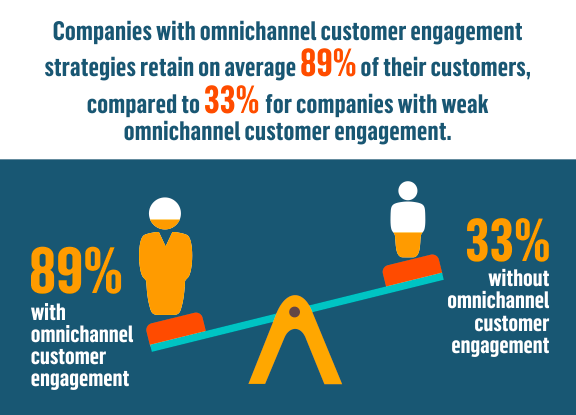Call Sales: +1 (833) 437-3835
Call Sales: +1 (833) 437-3835
Revel | February 16, 2017 |

The technology industry has harped on the idea of “omni-channel marketing.” And while definitions vary and the buzz has muddled its meaning, the core principle is to create a seamless customer experience across all of your brand’s channels.
But what is simple to define can be difficult to actualize. As technology is constantly evolving, so should marketing. The key to agility, relevance, and profit is to optimize your omni-channel marketing. Here are three key ways:
Brand Consistency
In-store, mobile, desktop, tablet, etc. – there is a strong correlation between the number of touchpoints and the likelihood that customers will choose a brand to buy from. Each device can be broken down further; a mobile user could access your brand’s social media, mobile application, website, and email promotions all on one device.
Equally important to the quantity of touchpoints, is the customer’s experience with them. Whereas modern customers seamlessly switch between devices, the brand identity should be cohesive. If your Instagram is designed to build brand awareness and your website is designed to convert leads, both should have one clear identity.
Customers more and more make purchasing decisions based on how they feel when they interact with that brand. Thus, maintaining a consistent feel across all channels will build trust and brand equity. The more channels your brand lives on, there is more brand exposure and avenues for to drive sales.

Personalized Messaging
This is not to contradict the importance of brand consistency – voice, colors, and identity should be consistent across the board. Within each platform, though, content should be personalized to reflect the audience that is consuming it. People use different devices for different reasons: mobile users seek out entertaining, truncated content while desktop users seek informative, longer form content.
Nearly three-fourths of online consumers get frustrated with websites when content appears that has nothing to do with their interests. In order to forge trust, loyalty, and ultimately business you need to deploy device and audience targeted marketing. Treat your customers as you would a community – address shoppers by their name and interests, even acknowledge their birthdays!
Data Driven Marketing
Say a customer stumbles upon your website, gets distracted, and then later goes on Facebook to see a banner ad for your brand, then clicks through and purchases. This is an example of successful remarketing. Remarketing is reaching people who have been on one of your digital channels. To nail this practice, it’s about focusing on the granular audience, specific search terms, and hyper targeted messaging.
Omni-channel will expand your remarketing efforts and allow you to get more personalized with advertising, leading to higher conversion rates.
With Custom Commerce, businesses can brand and customize the look and feel of their own mobile application. You can digitize your physical store and place your brand in the palm of customers’ hands. Expand revenue opportunities with a cohesive, fully customized app and empower your customer with the choice of when and where to buy. Custom Commerce by Revel is redefining the path to purchase.
| See More: Revel POS 101: Enhanced Customer Experience With Custom Commerce|